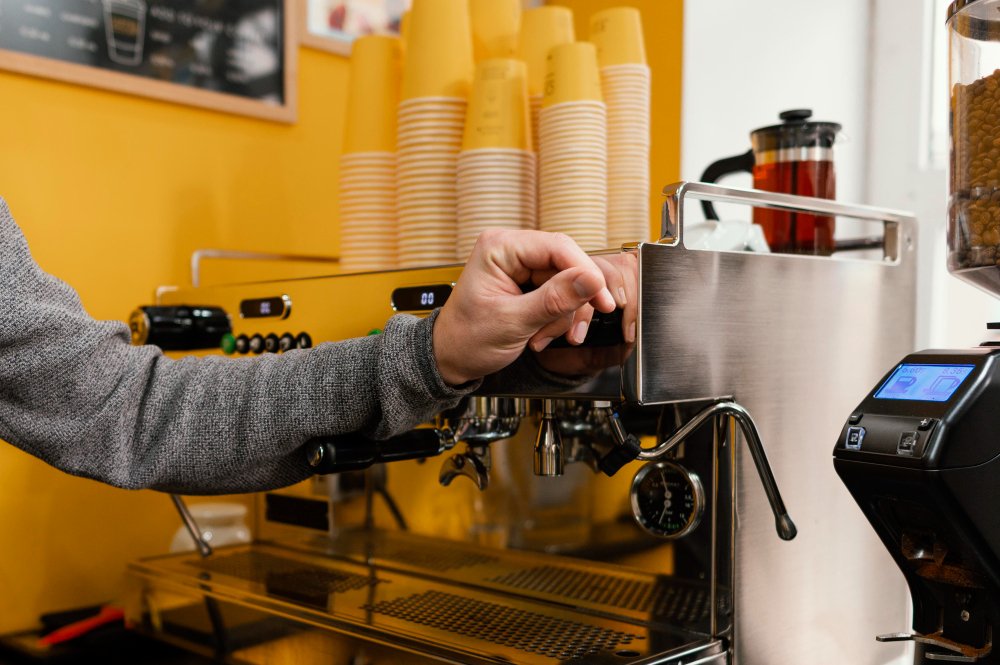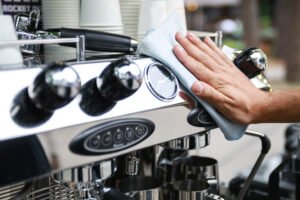Choosing between a fully automatic and a semi-automatic coffee machine can be challenging, especially when both options have their own advantages. The right choice depends largely on your business needs, the experience level of your staff, and the type of coffee experience you want to offer. This guide will help you understand the key differences, pros and cons, and factors to consider when choosing between these two types of coffee machines.
1. Understanding Fully Automatic and Semi-Automatic Machines
Before diving into the pros and cons, let’s define what fully automatic and semi-automatic coffee machines are.
- Fully Automatic Coffee Machines: These machines handle almost the entire coffee-making process with minimal human intervention. They automate grinding, tamping, brewing, and often milk frothing as well. Fully automatic machines are ideal for high-traffic businesses where speed and consistency are key.
- Semi-Automatic Coffee Machines: These machines automate certain aspects, like controlling water temperature and pressure, but still require a barista to grind, tamp, and start/stop the brewing process manually. Semi-automatic machines provide more control over the brewing process, making them popular in specialty coffee shops.
2. Key Differences Between Fully Automatic and Semi-Automatic Machines
Understanding the main differences can help you determine which machine type better suits your business needs:
- Control: Semi-automatic machines allow baristas to manually control the extraction process, offering more flexibility for customization. Fully automatic machines handle most steps, producing consistent results with minimal input.
- User Skill Level: Semi-automatic machines require skilled operators or trained baristas to ensure quality, while fully automatic machines are easy to use and require little training, making them ideal for self-service setups or businesses with high staff turnover.
- Speed and Efficiency: Fully automatic machines are faster because they handle multiple steps simultaneously. Semi-automatic machines may take longer due to the manual input required, which can slow down service during peak hours.
3. Pros and Cons of Fully Automatic Coffee Machines
Pros
- Ease of Use: Fully automatic machines are straightforward to operate, even for inexperienced users, making them suitable for offices, hotels, or self-service environments.
- Consistent Quality: With automated settings, these machines ensure each cup is made with the same parameters, reducing variability in taste and quality.
- Time Efficiency: Fully automatic machines produce coffee quickly and require minimal oversight, allowing staff to focus on other tasks.
Cons
- Limited Customization: Because most of the process is automated, fully automatic machines may lack the flexibility for fine adjustments, which can be a drawback in specialty coffee environments.
- Higher Cost: Fully automatic machines are generally more expensive due to their advanced features and automation capabilities.
- Maintenance Complexity: These machines have more components, which may require regular maintenance and servicing to keep them in optimal condition.
4. Pros and Cons of Semi-Automatic Coffee Machines
Pros
- Greater Control: Semi-automatic machines allow baristas to control the brewing time, pressure, and grind size, making it easier to customize each cup.
- Ideal for Specialty Coffee: For businesses focused on artisan coffee, semi-automatic machines offer the flexibility needed to perfect espresso shots.
- Cost-Effective: Semi-automatic machines are typically less expensive than fully automatic ones, making them a good option for smaller businesses.
Cons
- Requires Skilled Operators: These machines need trained baristas to operate effectively, which may not be ideal for all business types.
- Slower Service: Semi-automatic machines can be slower, as each shot requires more manual work, which may affect service speed during busy times.
- Learning Curve: It takes time for staff to learn how to use a semi-automatic machine correctly, potentially requiring investment in training.
5. Which Machine is Right for Your Business?
Choosing between fully automatic and semi-automatic machines depends on your business model, budget, and customer expectations. Here are some factors to consider:
a) Business Type and Volume
- High-Volume Businesses: If your business has a high customer turnover, such as a café in a busy location or an office, a fully automatic machine can handle orders faster and maintain consistency, which is essential for customer satisfaction.
- Specialty Coffee Shops: If you run a specialty coffee shop where quality and customization are prioritized, a semi-automatic machine may be a better choice. It allows experienced baristas to fine-tune each shot and offers the level of quality customers expect from specialty coffee.
b) Staff Skill Level
- Skilled Baristas: If your business employs skilled baristas, a semi-automatic machine can showcase their expertise and enhance the customer experience. It’s a great choice for environments where customers value craftsmanship.
- Minimal Training Required: If staff training time and turnover are concerns, a fully automatic machine minimizes the need for specialized skills, allowing anyone to produce quality coffee consistently.
c) Customer Interaction and Experience
- Self-Service Environments: Fully automatic machines are ideal for self-service areas, like hotel lobbies or offices, where customers can easily operate the machine themselves without barista assistance.
- Interactive Experiences: For businesses where customer interaction is a priority, such as boutique coffee shops, a semi-automatic machine offers a more hands-on experience that allows baristas to engage with customers and explain the coffee-making process.
6. Budget Considerations
Budget can be a deciding factor when choosing between these two types of machines. Here’s a quick breakdown:
- Fully Automatic Machines: These machines are often more expensive due to their advanced automation features. However, they can save on labor costs and require less training, which may offset the initial investment in the long term.
- Semi-Automatic Machines: Typically more affordable upfront, semi-automatic machines may require additional investment in training. However, they offer control and flexibility that may appeal to businesses focused on quality and customization.
Choosing a machine within your budget that also meets your operational needs is key to maximizing return on investment.
Conclusion
Both fully automatic and semi-automatic coffee machines have their advantages, and the best choice depends on your business’s unique needs. Fully automatic machines excel in environments where speed, consistency, and ease of use are priorities, making them perfect for high-traffic locations and self-service setups. On the other hand, semi-automatic machines provide greater control, ideal for specialty coffee shops that prioritize quality and customization.
Consider factors like business volume, staff expertise, customer expectations, and budget when making your decision. The right coffee machine can enhance your customer experience, streamline operations, and ultimately contribute to your business’s success.





